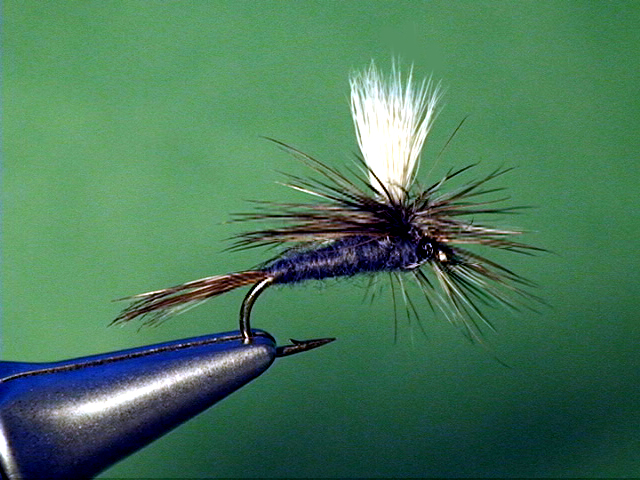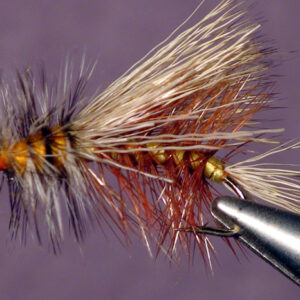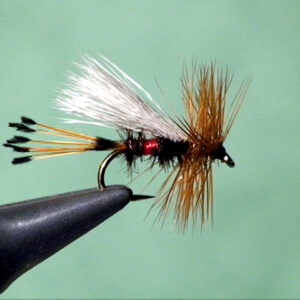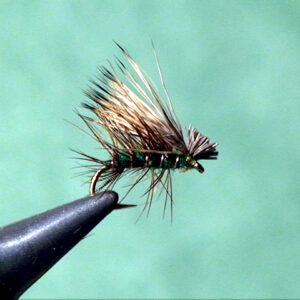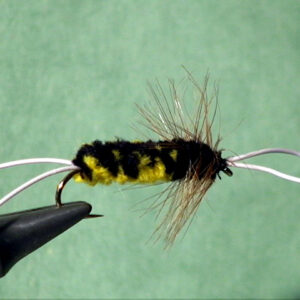Hook Size 12/14/16/18
The Parachute Adams trout fly could be the most popular trout fly of all times.
Some anglers swear by it. Both the Adams fly and the Parachute Adams fly have
a long history of success. The Adams fly was developed in 1922 in Michigan by
Leonard Hallady. He named the fly after his friend, Judge Charles F. Adams. The
fly was developed to catch the stocked trout that was replacing the Grayling and
Brook trout which were almost becoming extinct due to over fishing. The new
stocked trout were brown trout.
According to some, the fly was first used in the Boardman River. Eventually, the
Adams fly lead to other variations of the fly including the Parachute Adams. The
original parachute fly was called a gyro fly. It was first sold by William Mills and
Son of New York, a sporting goods store. In 1934, according to our research, the
fly was patented by William Avery Bush of Detroit Michigan.
Others claim the originator of the Adams fly is unknown. Some say it first began
as a down-wing caddis imitation, looking more like a wet fly than a dry fly. At one
point a western version of the Adams had a hen wing and some say this was the
first Adams as we know it today.
The Parachute Adams became a success primarily because it caught trout, but
more specifically, because it suspends in the surface film where mayflies usually
emerge. The horizontally wound hackle looks much like the insects legs. Prior to
that, the Catskill style flies had vertically wound hackle and the hackle all appears
in one place in relationship to the body of the mayfly. The parachute style
spreads out the hackle and looks much more like the legs of a mayfly.
The other big reason the Parachute Adams was a success is the fact the
parachute post is very visible and offers an advantage to an angler because it is
easily seen under varying light conditions.
The Parachute Adams isn’t a specific imitation of any particular aquatic insect
although it does look more like a mayfly than a caddisfly or stonefly. It’s colors
are suggestive of several different species of mayflies. There are many
variations of the Adams but all in all, the Parachute Adams is the most popular
and the most successful at imitating a large variety of mayflies.
One effective method of fishing the Parachute Adams is the up or slightly up and
across stream presentation. This offers an advantage because trout face into the
current and feed on insects drifting downstream. When your fishing in an
upstream direction you are sneaking up behind the fish. However you present
the Parachute Adams, there’s one thing for certain. You know you are presenting
one of the most effective generic dry flies ever invented.
